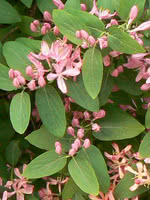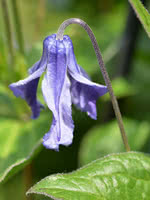Mon-Fri 9am - 5pm Mountain time
Twining Honeysuckle vs Blue Boy Clematis
Lonicera dioica
Clematis integrifolia Blue Boy
CUSTOM GROW
NOT AVAILABLE THIS SEASON - MIGHT RETURN
Twining Honeysuckle is a vine native to the forests of Canada and the United States.
It can often be found winding up the bark of large trees or spreading out as a ground cover where no supports are present. You will love the attractive, yellow-orange flowers with pink centers which turn into red, inedible berries.
Consider Twining Honeysuckle when trying to achieve a natural, spreading, unkempt look for your garden.
Blue Boy Clematis is a cold-hardy, fast growing, woody climbing vine. Hundreds of stunning steel-blue bell shaped flowers adorn the vine throughout the summer that droop and appear to hang in the air. The fibrous stems spread and create a fan-like symmetry shape.
This species will do best with support from a trellis, fence, or even other shrubs or tree stumps.
The Blue Boy Clematis was developed in Manitoba, Canada in 1947 by famous breeder Frank L. Skinner by crossing C. integrifolia x C. viticella, but it didn’t gain popularity until the 1990’s.

